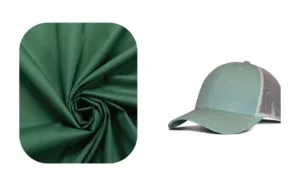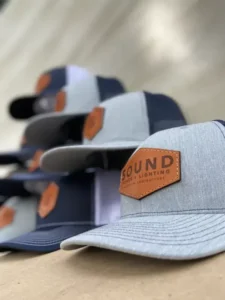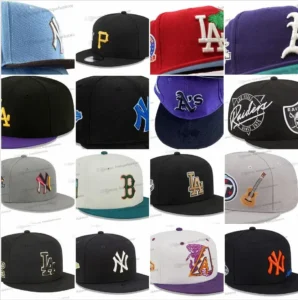Baseball caps are more than just simple headwear—they’re style statements, practical accessories, and even cultural icons. But have you ever paused to wonder what really makes a baseball cap comfortable, durable, and stylish? A big part of that answer lies in the fabric used. Choosing the right fabric not only affects how your cap looks but also how it feels, performs, and lasts.
The best fabric for baseball caps balances breathability, durability, comfort, and style. Common choices include cotton, polyester, blends, and eco-friendly materials, each serving different needs from casual wear to high-performance sports.
Imagine you’re on a sunny day out playing ball or walking the city streets—your cap’s fabric can either keep you cool and comfy or leave you sweaty and irritated. Understanding the materials behind your favorite caps will give you a fresh appreciation for what goes into this everyday essential. Let’s dive in and explore which fabrics truly earn the crown in baseball cap manufacturing.
1. What Fabrics Are Commonly Used for Baseball Caps?
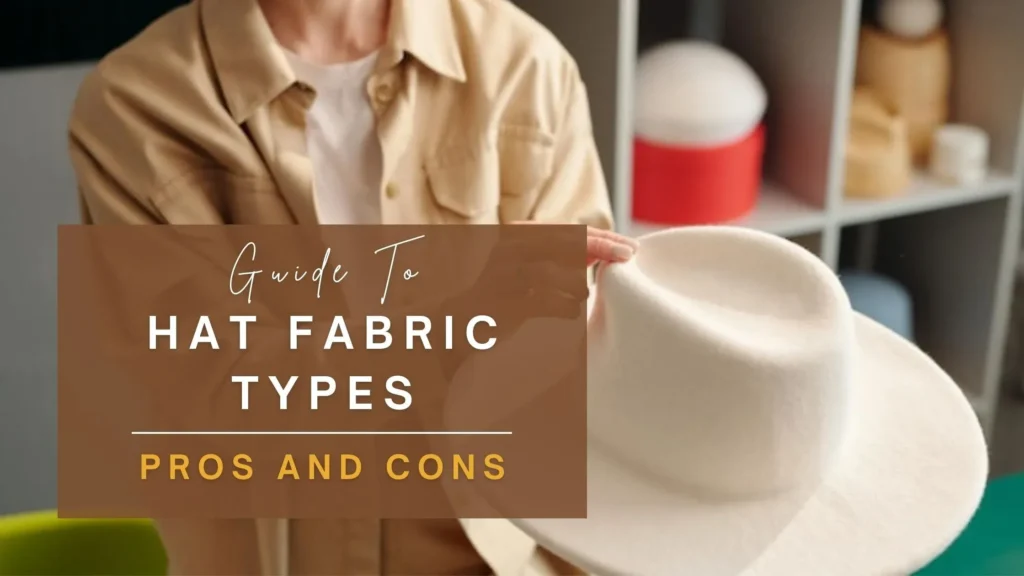
Baseball caps are typically made from cotton, polyester, wool, or blends of these materials. Each fabric type has unique traits influencing the cap’s comfort, durability, and look.
Common fabrics include cotton for breathability, polyester for durability and moisture management, wool for warmth, and blends that combine multiple benefits.
- Cotton: Known for its softness and breathability, cotton is a classic choice. It feels comfortable against the skin but can wrinkle easily and may fade after multiple washes.
- Polyester: A synthetic fabric prized for its strength and wrinkle resistance. Polyester wicks moisture well, making it ideal for active or sports caps.
- Wool: Often used in vintage or fashion caps, wool provides warmth but isn’t the best for hot weather.
- Blends (Cotton-Polyester): These combine the softness of cotton with the durability and moisture-wicking of polyester, offering an all-around practical fabric.
- Specialty Fabrics: Materials like nylon or spandex can appear in performance caps for stretch and enhanced fit.
The fabric choice depends on use case. For example, casual caps may favor cotton for comfort, while sports caps rely on polyester blends for performance.
| Fabric Type | Key Characteristics | Typical Use Case | Pros | Cons |
|---|---|---|---|---|
| Cotton | Soft, breathable | Casual wear | Comfortable, natural fiber | Wrinkles, fades faster |
| Polyester | Durable, moisture-wicking | Sports, performance caps | Strong, retains shape/color | Less breathable |
| Wool | Warm, textured | Fashion, cold weather | Warm, stylish | Not breathable, heavy |
| Cotton-Polyester Blend | Balanced softness and durability | Versatile | Combines benefits of both fibers | Slightly less natural feel |
| Specialty Fabrics | Stretch, lightweight | Performance, fit enhancement | Flexible, innovative | Usually more expensive |
2. Which Fabric Offers the Best Breathability and Comfort for Baseball Caps?
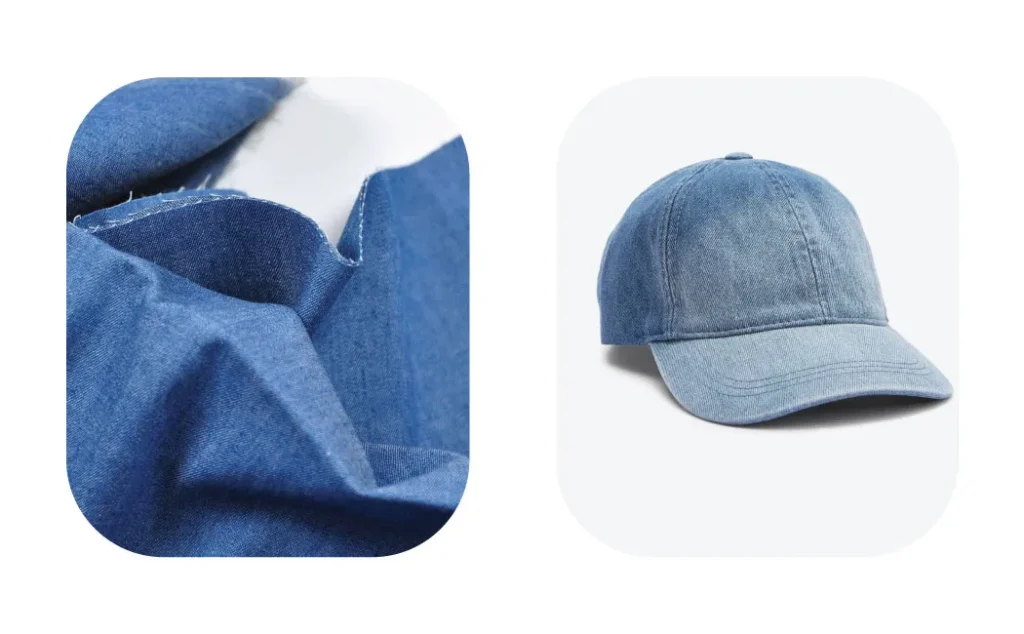
Cotton and cotton blends are generally the best for breathability and comfort because they allow air flow and feel soft on the skin.
Cotton fabrics excel in breathability and comfort, making them a top choice for casual and everyday baseball caps
- Why Breathability Matters: Caps trap heat, especially around the head. Breathable fabrics prevent overheating by allowing sweat to evaporate.
- Cotton’s Advantages: Natural fibers like cotton absorb moisture and provide ventilation, reducing sweat buildup.
- Polyester’s Role: While less breathable, polyester can be engineered into mesh or moisture-wicking fabrics that improve airflow and comfort.
- Mesh Panels and Ventilation: Some caps combine cotton with mesh polyester panels to optimize airflow.
- Fit and Fabric Softness: Soft cotton feels gentle, reducing irritation during prolonged wear.
Is maximum breathability always best? For colder climates, a less breathable fabric like wool might be preferable for warmth. Hence, comfort depends on environment and activity.
| Fabric or Feature | Breathability | Moisture Absorption | Comfort Level | Ideal Usage |
|---|---|---|---|---|
| Cotton | High | High | Very Comfortable | Casual, warm climates |
| Polyester (standard) | Moderate | Low | Moderate | Sports, hot climates |
| Polyester Mesh Panels | High | Moderate | Comfortable | Active wear |
| Wool | Low | Moderate | Warm but less breathable | Cold weather, fashion |
| Blends (Cotton-Poly) | Moderate | Moderate | Balanced | Versatile |
3. How Does Fabric Durability Impact the Lifespan of a Baseball Cap?

Durability directly affects how long a baseball cap maintains its shape, color, and function under wear and tear.
Durable fabrics like polyester and cotton-polyester blends extend the lifespan of baseball caps by resisting fading, shrinking, and tearing.
- Polyester’s Strength: Polyester resists abrasion and holds color well even after repeated washing, making it a durable choice.
- Cotton’s Limitations: While soft, pure cotton can wear out faster and shrink or fade without careful care.
- Blended Fabrics: Combining cotton with polyester offers durability without sacrificing too much comfort.
- Environmental Exposure: Caps exposed to sunlight and sweat degrade faster; fabric UV resistance and moisture management become important.
- Stitching and Fabric Weight: Heavier-weight fabrics usually last longer but may reduce breathability.
A baseball cap made of 65% polyester and 35% cotton typically outlasts a 100% cotton cap by 30-50% in terms of shape retention and color vibrancy.
| Fabric Type | Fade Resistance | Shrink Resistance | Tear Resistance | Longevity (relative) |
|---|---|---|---|---|
| Polyester | High | High | High | Long-lasting |
| Cotton | Moderate | Low | Moderate | Moderate |
| Cotton-Polyester Blend | High | Moderate | High | Longer than cotton |
| Wool | Moderate | Moderate | Moderate | Variable |
4. Do Eco-Friendly Fabrics Perform Well in Baseball Cap Manufacturing?
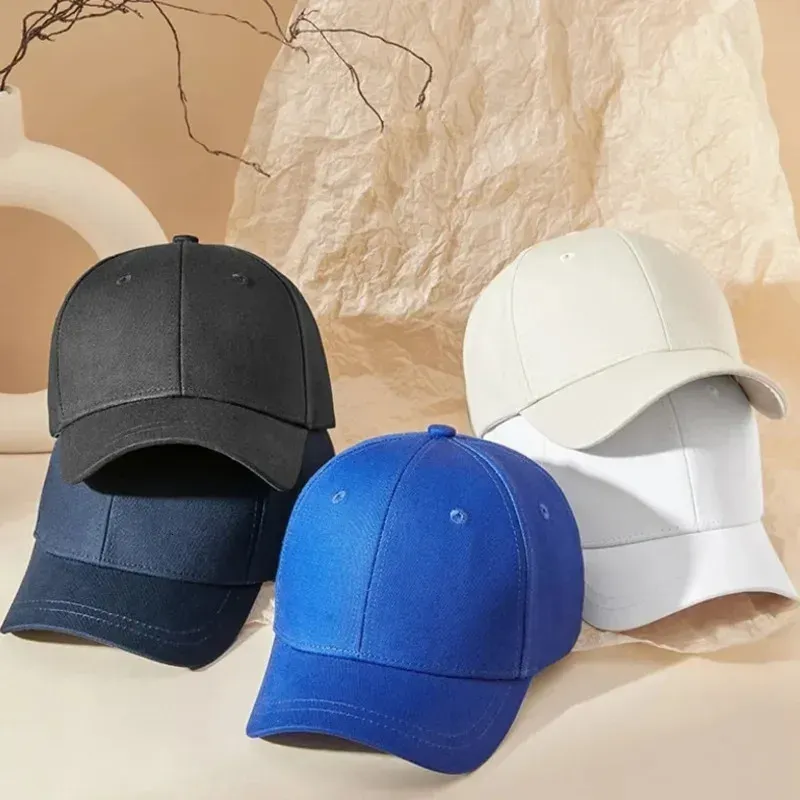
Sustainability is a growing priority. Eco-friendly fabrics like organic cotton, recycled polyester, and hemp are gaining ground without compromising performance.
Eco-friendly fabrics can match traditional materials in durability and comfort while reducing environmental impact in baseball cap production
- Organic Cotton: Grown without harmful pesticides, organic cotton offers the same softness and breathability as conventional cotton but is more sustainable.
- Recycled Polyester: Made from plastic bottles, it reduces waste and often maintains the durability and moisture-wicking properties of virgin polyester.
- Hemp: A natural fiber that is strong, breathable, and sustainable but less common in caps due to rougher texture.
- Challenges: Some eco fabrics may cost more or require different manufacturing processes.
- Consumer Demand: Brands integrating eco fabrics tap into the growing market of environmentally conscious consumers.
While eco fabrics are promising, balancing cost, availability, and performance remains a challenge for large-scale production.
| Eco-Friendly Fabric | Environmental Benefit | Performance Compared to Traditional | Cost Impact | Common Challenges |
|---|---|---|---|---|
| Organic Cotton | Reduced pesticides, less water usage | Similar comfort and breathability | Slightly higher | Supply chain availability |
| Recycled Polyester | Reduces plastic waste | Comparable durability and wicking | Competitive | Perception & processing cost |
| Hemp | Biodegradable, low water usage | Strong but rougher texture | Variable | Limited sourcing, texture |
5. Is Cotton or Polyester Better for Baseball Caps?
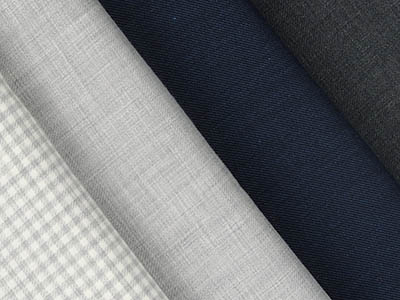
Choosing between cotton and polyester depends on priorities such as comfort, durability, price, and intended use.
Cotton is preferred for comfort and breathability, while polyester excels in durability, moisture management, and shape retention.
- Comfort: Cotton is softer and less likely to irritate skin.
- Durability: Polyester resists shrinking, fading, and wrinkles better than cotton.
- Moisture Handling: Polyester dries faster and wicks sweat, ideal for sports caps.
- Cost: Cotton is generally less expensive, but high-quality polyester can be competitively priced.
- Appearance: Cotton has a classic matte finish, while polyester can appear shinier but retains color longer.
| Feature | Cotton | Polyester |
|---|---|---|
| Breathability | High | Moderate |
| Durability | Moderate | High |
| Moisture Wicking | Low | High |
| Comfort | Very Soft | Slightly Synthetic Feel |
| Maintenance | Can Shrink & Wrinkle | Wrinkle Resistant |
| Environmental Impact | Conventional cotton uses more water | Recyclable option available |
6. Are There Specialized Fabrics for Different Uses, Such as Sports or Fashion Baseball Caps?
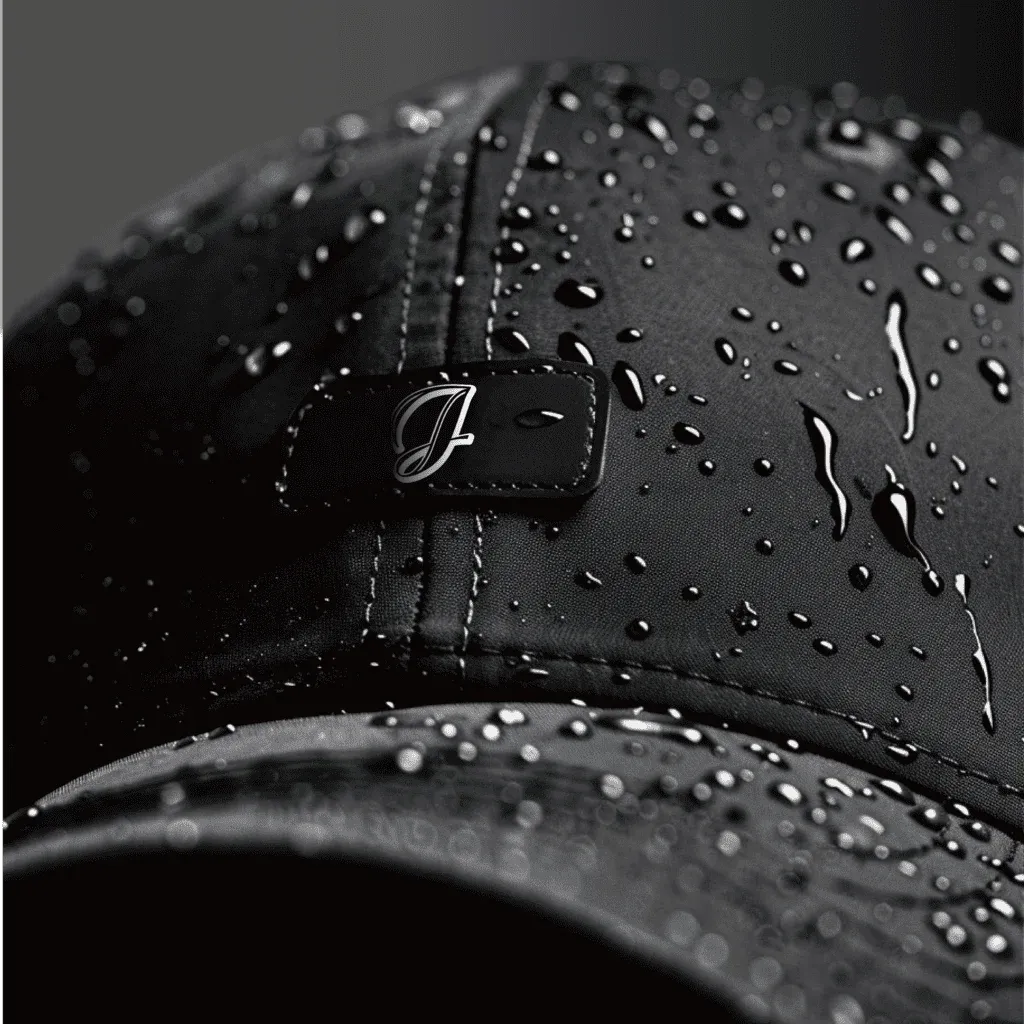
Yes, fabric choices vary widely depending on whether the cap is for athletic performance, fashion, or casual everyday wear.
Sports caps often use moisture-wicking, lightweight fabrics, while fashion caps focus on texture and appearance with materials like wool or suede.
- Performance Caps: Use technical fabrics like polyester mesh, nylon, or spandex blends for breathability, stretch, and sweat management.
- Fashion Caps: Incorporate wool, suede, leather, or specialty weaves to create unique textures and luxury appearances.
- Casual Caps: Often made from cotton or cotton blends focusing on comfort and classic style.
- Seasonal Fabrics: Winter caps might use thicker wool or fleece, while summer caps rely on lightweight cotton or mesh panels.
- Innovative Materials: Some brands experiment with waterproof or stain-resistant fabrics for added functionality.
The best fabric choice must align with the cap’s intended context, user lifestyle, and fashion trends.
| Cap Type | Typical Fabrics | Key Features | Ideal Context |
|---|---|---|---|
| Sports | Polyester mesh, nylon, spandex blends | Breathable, moisture-wicking, stretch | Active, hot weather |
| Fashion | Wool, suede, leather | Textured, luxury feel | Style-focused, cold weather |
| Casual | Cotton, cotton blends | Comfortable, breathable | Everyday wear |
| Seasonal (Winter) | Wool, fleece | Warmth, insulation | Cold weather |
| Specialty | Waterproof fabrics, stain-resistant | Functionality | Outdoor, rugged use |
Choosing the best fabric for baseball caps depends on multiple factors: breathability, durability, comfort, environmental impact, and specific use cases. Cotton and polyester, along with their blends, dominate the market because they strike a balance across these dimensions. Meanwhile, the rise of eco-friendly fabrics offers promising alternatives that meet modern sustainability demands without sacrificing quality.
At Kinwin, we specialize in crafting high-quality baseball caps using carefully selected fabrics that meet both performance and environmental standards. Whether you want breathable casual caps, durable sports headwear, or stylish fashion pieces, our advanced production lines and strict quality controls ensure your needs are met with excellence.
Ready to customize your perfect baseball cap? Contact Kinwin today to discuss fabric options, designs, and bulk production tailored to your brand’s unique vision.



